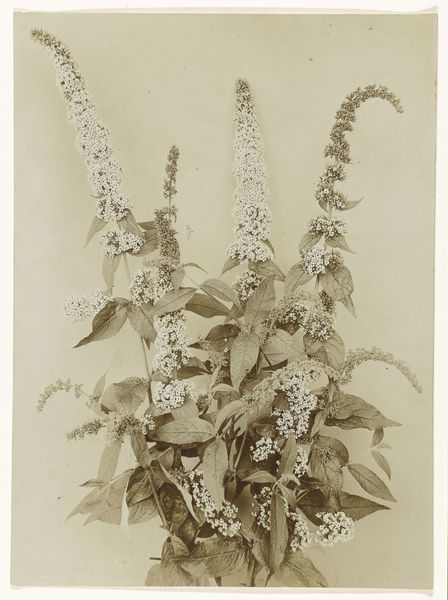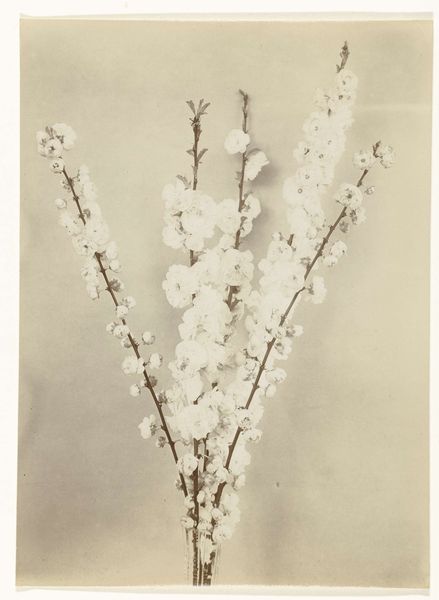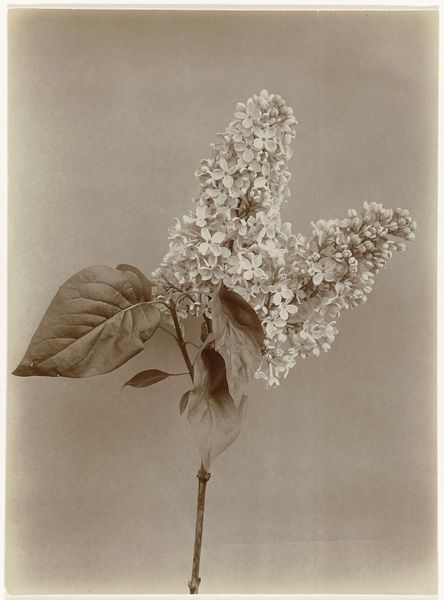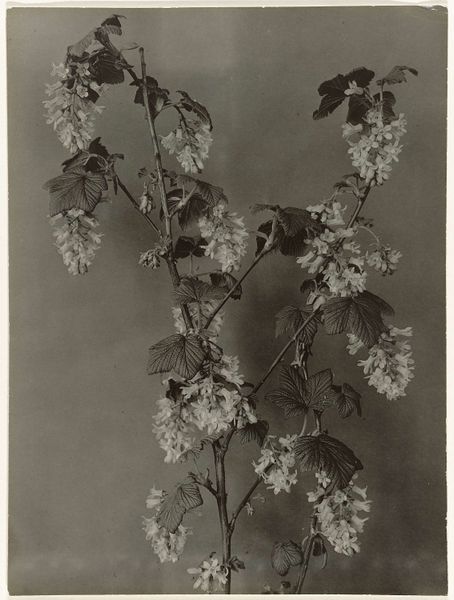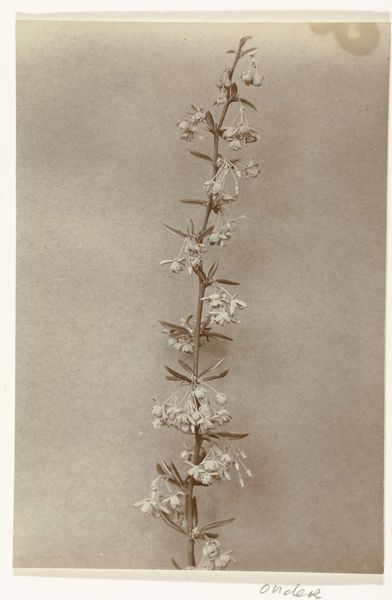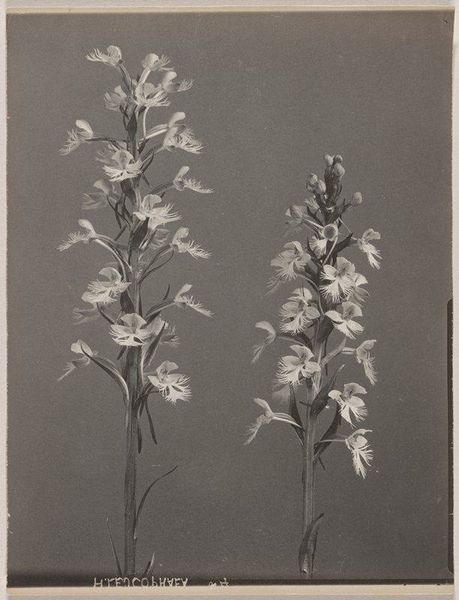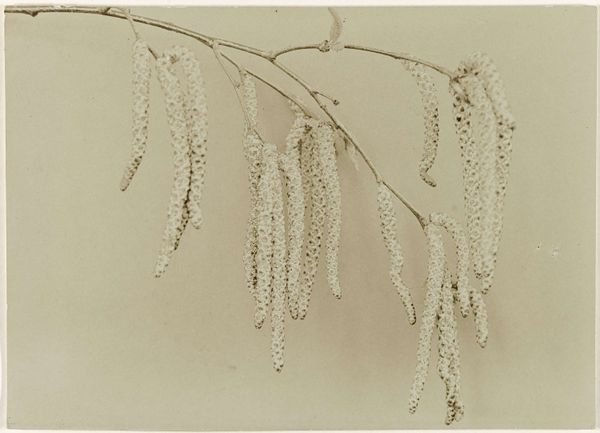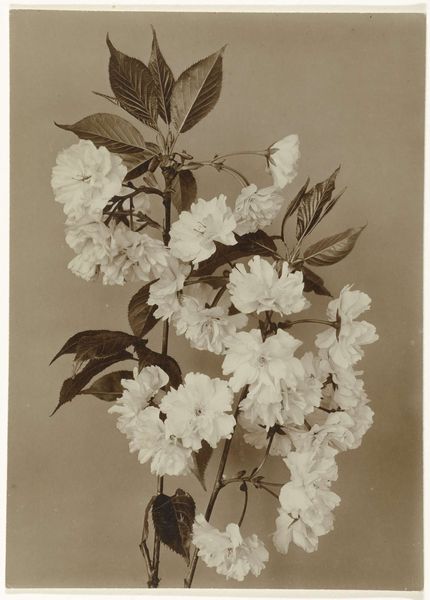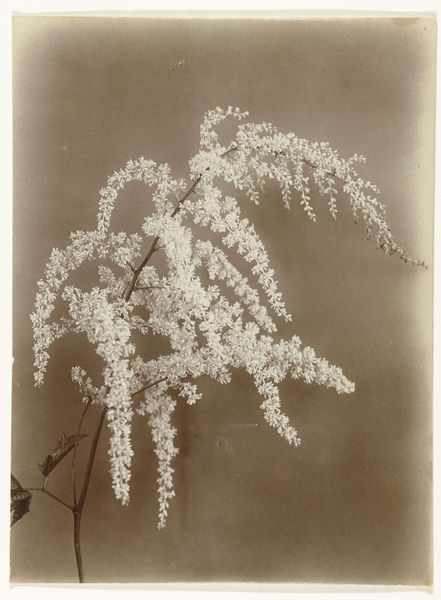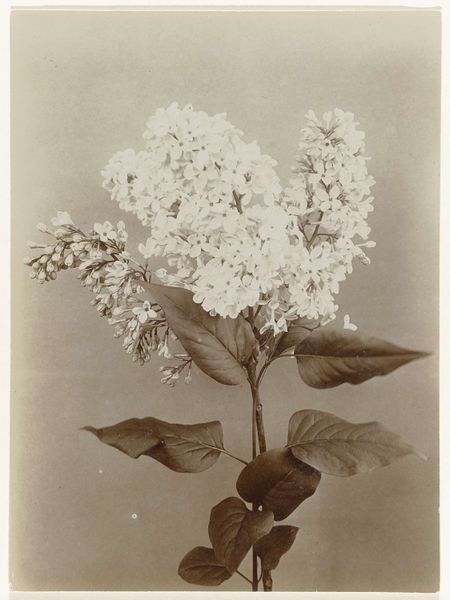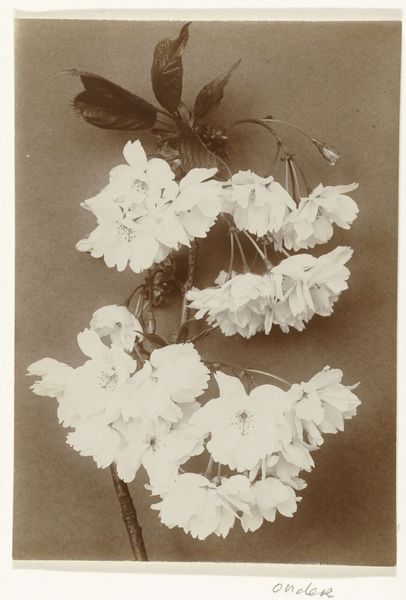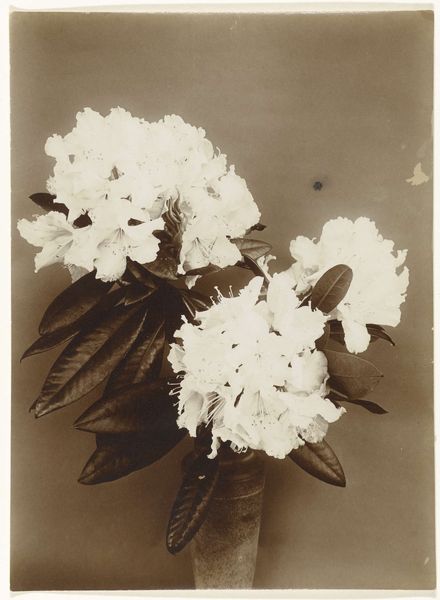
photography
#
still-life-photography
#
pictorialism
#
photography
#
floral photography
#
botanical photography
#
food photography
#
flower photography
Dimensions: height 219 mm, width 166 mm
Copyright: Rijks Museum: Open Domain
Editor: This is Richard Tepe’s "Spierkruid in bloei", created sometime between 1900 and 1930. It’s a still life photograph, simple in its composition, but really elegant in its subject matter. What jumps out at you when you look at it? Curator: I’m drawn to the process here. This is Pictorialism, which aimed to elevate photography to the level of fine art. Look at how the artist uses soft focus, blurring the line between the industrial production of photography and a handcrafted, artistic print. Editor: So, you see it as a kind of rebellion against industrial photography? Curator: Exactly! It challenges the notion of photography as purely mechanical reproduction. Tepe manipulates the process. This is evident in the materials, he experiments with techniques like dodging and burning in the darkroom, effectively "sculpting" with light. The choice of subject matter also plays a part, still-life became about not just the aesthetic of the floral scene, but also of labour of making something like it. How do you see its consumption during the time period? Editor: It makes me wonder about access. Was this kind of art only available to the upper classes, those who could afford photography equipment and appreciate fine art? Curator: That's a very astute point. It opens up questions about the socio-economic context of artistic production. The consumption of such imagery reflects a certain social stratification, where leisure and appreciation of art were often associated with privilege. We tend to discuss a lot about what goes in its making, but we should also question who has the means to commission, buy and enjoy it, at that time period. Editor: That's really made me rethink what I initially thought was a simple still life. Thanks! Curator: And you've pushed me to consider the image's social impact beyond its material creation. It's all about labor, access, and the consumption of beauty!
Comments
No comments
Be the first to comment and join the conversation on the ultimate creative platform.
